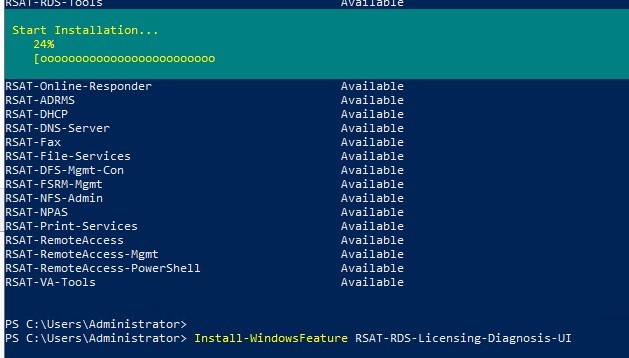

- #Powershell remote server management tools windows 10 full#
- #Powershell remote server management tools windows 10 code#
- #Powershell remote server management tools windows 10 password#
#Powershell remote server management tools windows 10 password#

You can also stop a particular instance of a process using its process ID: Stop-Process -ID 1943 10. For instance, you can stop all Notepad processes using the following command: Stop-Process -Name notepad Terminate the process by typing the Stop-Process command with the process ID or process name. Use the Get-Process command to get the process ID or name of the unresponsive process. This is particularly useful when a process freezes up. The Stop-Process command enables you to stop a process (or some of its instances) currently running on a computer. Use the Start-Process command followed by the requisite parameters to start a process. This is quite similar to the Start-Service command and allows you to start one or more processes via PowerShell. For example, ‘Start-Service -Name "WSearch"’ opens up Windows Search. To do this, append the name of the service to the Start-Service command. The Start-Service command allows you to start any service on Windows - even if the service is disabled. The Get-ExecutionPolicy command helps you do this. For instance, “Set-ExecutionPolicy Unrestricted”.Īs an IT admin working on unfamiliar computers and servers, you should first find out the status of the execution policy before running a script. All you need to do is enter the Set-ExecutionPolicy command and the policy name.

The Set-ExecutionPolicy command allows you to select your preferred level of security.
#Powershell remote server management tools windows 10 code#
To prevent the execution of malicious code in the PowerShell environment, scripting is disabled by default - i.e. Scripts created remotely are allowed to run only if they are signed by trusted publishers.
#Powershell remote server management tools windows 10 full#
If you need to know how the Get-EventLog command works, all you need to do is type “Get-Help -Name Get-EventLog” and Windows displays the full command syntax. Get-Help is a simple but very useful command that enables admins to obtain helpful information about other PowerShell cmdlets, scripts, etc.


 0 kommentar(er)
0 kommentar(er)
